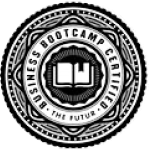The elements of branding are the facets that create a consumer’s perception of the brand. Every action taken in the branding process enhances or defines these elements to the audience. Branding goes beyond creative images and catchy phrases. It is about weaving every aspect of the brand together, which creates an emotional link with the target audience. With the help of branding elements, a firm can create a cohesive and recognizable name for itself in the market. The alignment of all these elements is necessary for a branding process to work. Let us delve deep into the concept to identify the key elements.

Branding Introduction: The Six Key Elements of Branding
Successful branding is a result of well-aligned strategies and characteristics that define a company’s purpose, story, and emotion. Every business interaction must focus on branding design elements to establish a fruitful foundation in the market. We can break down these elements into six categories.
1. Identity/Image
Brand identity or image is a set of aspects that make a business recognizable and known to its audience. It is the idea of what the brand is and what is worth in the market. For instance, Nike has an image of manufacturing quality sportswear. Every branding effort must elevate this identity for a successful brand run.
2. Position
The position of a brand in the market defines its specialty, something that makes it stand out from the rest. It is the key differentiation that a company needs to promote using suitable branding methods. For instance, Amazon tries to retain its market position by offering enhanced services to its customers.
3. Relative Story
The brand story illustrates a company’s history in a way that appeals to its new and existing customers. It infuses an emotional connection with the brand and helps earn customer loyalty.
4. Communication
Branding is nothing but another way of marketing without effective communication. It is one of the vital branding elements. It sends a message through slogans, logo designs, brochures, packaging, etc.
5. Experience
Brand experience is how a customer feels after using a company’s product or service. It counts as the overall impact on customers after they have become a part of the brand. A branding company that has spent years in the industry can help you create this upmarket experience for your customers.
6. Association
The physical and visual artifacts used in the branding process form a brand’s association. It comprises everything starting from logos, packaging, and brochures, to slogans, and storytelling. All these components make a branding process prosperous.
What are the Best Elements of Successful Branding?
The concept of Branding has been around since 950 A.D when to ‘brand’ meant burning a piece of wood. By the 1300s it was used to describe a torch, essentially a burning piece of wood that is to be used as a tool. By the 1500s the meaning had changed to a mark burned on cattle to show ownership. Over the years the method might have changed but the point of the invention remained simple – each brand was a distinct mark to help identify quickly – essential traits that are still common to modern logos.
Branding has broadened quite a bit since the word first came into use. Today, branding is more than its name, tagline, website, or logo. A brand is how you make your customers feel, and it’s built by taking a consistent approach across every interaction they have with your brand.
To make a great brand, five key elements are crucial: Purpose, promise, position, personality, and expression. It is important to know that your brand is the complete story of what you want to communicate about your business and the perception that you leave in the hearts and minds of your audience. That’s why before you start worrying about creatives, logos, or marketing – you must sit with your Branding Agency and get clarity on who your brand truly is.
Like Jeff Bezos, the founder and CEO of Amazon.com said, “Your brand is what people say about you when you leave the room.”
1. Brand Purpose:
“Start by knowing what you want and who you are, build credibility around it, and deliver it online in a compelling way.” – Krista Neher
The first step toward building any brand is to define its purpose. Why do you exist? How are you different from others?
A good place to start understanding a brand’s purpose is through the author, Simon Sinek’s ‘The Golden Circle’. Let’s start! According to Mr. Sinek understanding the deeper ‘why’ your brand exists provides a solid foundation to build everything else — your ‘how’ (organizational culture, brand experience) and your ‘what’ (what products or services you offer).
For example, Tesla’s ‘why’ or the brand purpose is ‘to accelerate the world’s transition to sustainable transport’. ‘How’ they did it was by creating a culture of technology, design, and innovation fuelled by the ambition to move the world away from non-renewable fossil fuels. ‘What’ they offer is a series of well-designed electric vehicles, and energy storage systems to support them.
2. Brand Position:
“Products are made in a factory but brands are created in the mind” — Walter Landor
Brand Positioning according to Philip Kotler, father of modern marketing is “the act of designing the company’s offering and image to occupy a distinctive place in the mind of the target market”. In simple words, it is the part that describes what your company does, whom it caters to, what differentiates you from other competitors and what the consumer hopes to gain by using your product or service.
So, when developing your positioning strategy, there are 3 questions that you must answer to make your brand the ‘go-to choice’ instead of the alternative:
- What is the exact category that my brand falls in? It’s important to understand what market you are looking to dominate, where the opportunities are, and if there are any gaps you can fill.
- Who is my “best” target audience? Being a jack of all trades has never profited any business. You must narrow your target market down to your ideal customer and work towards understanding their specific needs and pain points.
- What is my USP? Ideally, every brand should deliver its unique story. To dominate a market full of similar products/services it is crucial to understand your strength or what is it about the brand that sets you apart in your industry?
3. Brand Promise:
“Your brand is a promise to your clients… a promise of quality, consistency, competency, and reliability” – Jason Hartman
After positioning yourself, the next step is to decide how you plan on creating value for your customer. Is it through excellent customer service or premium product quality? When it comes to building a brand, ‘the promise’ refers to the value that the customer can expect to receive every single time they interact with that company. In many ways, your brand’s promise is a direct extension of your positioning and the expectation that it sets.
For example, Disney’s promise is ‘creating happiness through magical experiences’. Apple’s ‘Think Different’ is arguably the most famous slogan of all time and the key to Apple’s wild success in the computer industry.
4. Brand Personality:
“If people believe they share values with a company, they will stay loyal to the brand.” — Howard Shultz, CEO of Starbucks
If your brand was a person- what human characteristics would you choose?
Elegant? Quirky? Serious
Brand personality is how your brand looks, speaks, behaves, and engages with the world. You can also consider your brand’s tone. A major section of a person’s personality is their story. Similarly, for a brand, the brand story builds credibility and adds value to the brand.
The brand story shows your company’s history and how it led you to where you are today. In most cases, it will help you connect emotionally with your customer and will distinguish you from the rest in a similar niche.
For example:
- Apple has a non-corporate, artistic, sophisticated, creative personality.
- Nike has an active lifestyle, and an inspirational, exciting, cool personality.
- Harley-Davidson has a macho, rebellious, freedom-seeking personality.
5. Brand Expression:
“Brand is just a perception, and perception will match reality over time.” – Elon Musk
After the groundwork is laid, this is where your logo, tagline, fonts, color palette, and even your brand’s name come in. Your brand promise must be reflected through your brand expression. Your brand expression must support your brand positioning. The key to the success of a branding process is consistency. Consistency will always be challenging. However, the harmony between these tangible and intangible elements will help people remember what your brand really is.
6. Brand Values and Objectives:
The audience is always keen to know the values and the mission of the company they are engaging in. These can be visually represented, whether through concise statements and pictures or both. Your business’s mission or objectives are the spirits of your brand, and every activity is aimed toward their successful accomplishment. You can add creative instincts or appealing touches to portray your brand’s vision.
7. Logo:
It is the one element that comprises all aspects of your brand and succinctly illustrates the essence of your business. Importantly, the logo is the face of your business, often tagged as the “visual name” of the company. It is the most valuable element of branding. Therefore, designing an awesome logo that summarises your business is arguably the toughest task. Some of the prominent logos are:
- Apple Inc. – The bitten apple
- Emaar – The five sharp rays
- Microsoft – The four-color windows
- Audi – The four interlocking rings
- Nike – The swoosh symbol
8. Brand Guidelines:
Like brand value or mission statement, brand guidelines are the anchor of the business, helping brands maintain their consistency. It sets the horizon of the business and cultivates a passage for prosperity. Brand guidelines streamline communication channels with company internal and external stakeholders, illustrating the essential business aspects clearly in the mainstream. It includes all the brandish things like fonts, objectives, imagery, color palette, tone, backgrounds, core values, and more.
9. Business Website and Social Media Page:
In this digital age, a business website is the most fundamental tool that manages every single activity of the business online. It is the digital arena of your business, helping your organization connect with the audience, portraying brand stories, propositions, strategy, content, and more. In addition, social media handles are equally important to build a valuable relationship with the customer and open the window for positive interaction, including sharing the brand message, customer support, feedback, and the latest business updates.
A brand is more than a logo. It is a collection of expectations, experiences, promises, benefits, and identity symbols that deliver your brand’s story. In normal cases, a professional creative agency like Vowels will help you strategically craft your branding, but we encourage discussions and it’s your brand.
When you learn that’s when the magic happens!
Discover All Branding Elements at VOWELS
Elevating your company using all the elements of branding strategy becomes effortless with our team! At VOWELS, we believe in uplifting every client’s experience by offering customized services. A dedicated team of professionals and designers will assist you at every step. Reach out to us online or give us a call to get detailed information!
3. FAQs
Q. Are all the elements of branding noteworthy?
Ans. Yes, every branding element is like a stepping stone to another. Professionals aim to define each of the branding design elements perfectly with the help of numerous tools and techniques.
Q. What is the use of branding elements?
Ans. The use of branding elements is to give character and meaning to a brand and its marketing team. It lays the foundation where companies can build a name for themselves in the competitive market.
Q. Who helps with the branding elements?
Ans. Leading branding agencies like VOWELS help companies identify and establish all branding elements at different stages of their market growth. You can contact us online or call our customer relations executives directly to get the required information.






